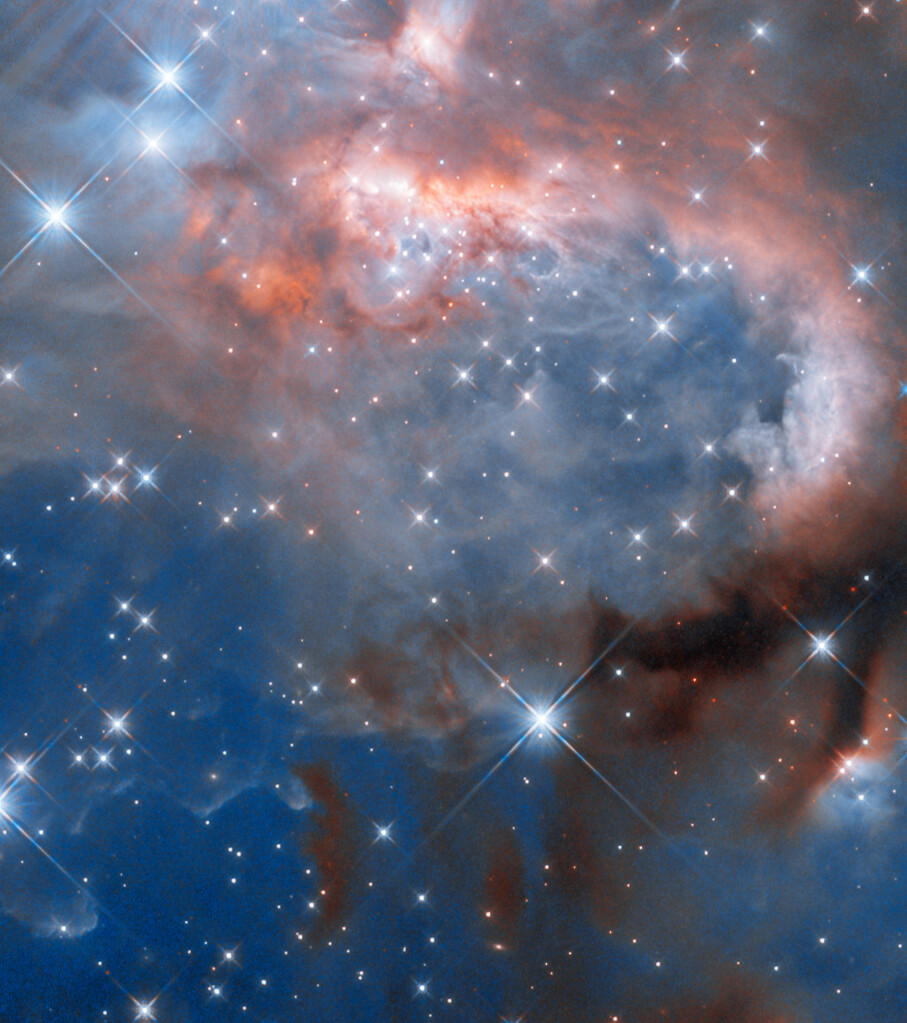Astronomers working with the Hubble telescope have published a new image. At its center can be seen a very spectacular cluster of interstellar gas and dust.

The nebula photographed by Hubble is known as RCW 7. It is located 5,300 light-years from Earth toward the constellation Puppis.
Nebulae are regions of space rich in the raw materials needed to form new stars. Under the action of gravity, parts of these molecular clouds collapse, becoming protostars surrounded by rotating disks of remnant gas and dust. In the case of RCW 7, the luminaries forming here are particularly massive. They emit strong ionizing radiation and fierce stellar winds that turn it into the so-called H II region.
The H II regions are filled with hydrogen ions. If H I means an ordinary hydrogen atom, then H II is hydrogen that has lost an electron. Ultraviolet radiation from massive protostars excites hydrogen, causing it to emit light, giving the nebula a soft pinkish glow.
In this case, Hubble’s target was the binary protostar IRAS 07299-1651. It is still in its glowing gas cocoon in the swirling clouds at the top of the nebula. To view this star and its siblings, Hubble photographed it in the near-infrared. Infrared radiation is able to pass through gas-dust clouds, giving astronomers a chance to learn what is at their center. Many of the other, larger stars in this image are not part of the nebula, but are between it and our Solar System.
The formation of the H II region marks the beginning of the end of the molecular cloud. Over several million years, radiation and wind from massive stars gradually dissipate the gas — especially as the most massive stars end their lives in supernova explosions. Only a fraction of the gas will be included in the new stars in this nebula, while the rest will disperse throughout the galaxy to eventually form new molecular clouds.
According to esahubble.org


